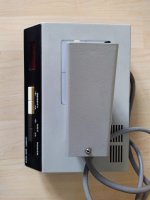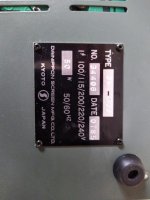ludwighagelstein
Member
Hi everyone,
This is my first post here - seeking help. I´m a photographer and recently bought an old but working Dainippon Screen DM-300 Densitometer, but sadly there is no manual to be found in the vast expanse of the internet and Screen themselves couldn't find one either - I asked there first. Now, in a last resort I figured that if someone had a manual for the device or worked with one once they´d probably read it here of all places, so here we go...
I´m grateful for any input!
Thanks in advance,
Ludwig
This is my first post here - seeking help. I´m a photographer and recently bought an old but working Dainippon Screen DM-300 Densitometer, but sadly there is no manual to be found in the vast expanse of the internet and Screen themselves couldn't find one either - I asked there first. Now, in a last resort I figured that if someone had a manual for the device or worked with one once they´d probably read it here of all places, so here we go...
I´m grateful for any input!
Thanks in advance,
Ludwig















